Jaguar E-Pace vs Porsche Panamera – Which model is better for everyday use?
Compare performance, boot capacity, efficiency and price at a glance.
Find out which car is the better choice for you – Jaguar E-Pace or Porsche Panamera?
Costs and Efficiency:
Looking at overall running costs, both models reveal some interesting differences in everyday economy.
Jaguar E-Pace has a convincingly advantage in terms of price – it starts at 32400 £, while the Porsche Panamera costs 99800 £. That’s a price difference of around 67371 £.
Fuel consumption also shows a difference: Jaguar E-Pace manages with 1.40 L and is therefore convincingly more efficient than the Porsche Panamera with 3 L. The difference is about 1.60 L per 100 km.
As for range, the Porsche Panamera performs noticeable better – achieving up to 97 km, about 28 km more than the Jaguar E-Pace.
Engine and Performance:
Power, torque and acceleration are the classic benchmarks for car enthusiasts – and here, some clear differences start to show.
When it comes to engine power, the Porsche Panamera has a significantly edge – offering 782 HP compared to 269 HP. That’s roughly 513 HP more horsepower.
In acceleration from 0 to 100 km/h, the Porsche Panamera is significantly quicker – completing the sprint in 2.90 s, while the Jaguar E-Pace takes 7.30 s. That’s about 4.40 s faster.
In terms of top speed, the Porsche Panamera performs evident better – reaching 325 km/h, while the Jaguar E-Pace tops out at 211 km/h. The difference is around 114 km/h.
There’s also a difference in torque: Porsche Panamera pulls decisively stronger with 1000 Nm compared to 540 Nm. That’s about 460 Nm difference.
Space and Everyday Use:
Cabin size, boot volume and payload all play a role in everyday practicality. Here, comfort and flexibility make the difference.
Seats: Jaguar E-Pace offers to a small extent more seating capacity – 5 vs 4.
In curb weight, Jaguar E-Pace is barely noticeable lighter – 1783 kg compared to 1960 kg. The difference is around 177 kg.
Boot capacity is identical – both offer 494 L of storage.
In maximum load capacity, the Porsche Panamera performs a bit better – up to 1385 L, which is about 215 L more than the Jaguar E-Pace.
When it comes to payload, Jaguar E-Pace hardly perceptible takes the win – 554 kg compared to 545 kg. That’s a difference of about 9 kg.
Who wins the race?
The Porsche Panamera proves to be leaves the rival little chance and therefore becomes our DriveDuel Champion!
Porsche Panamera is the better all-rounder in this comparison.
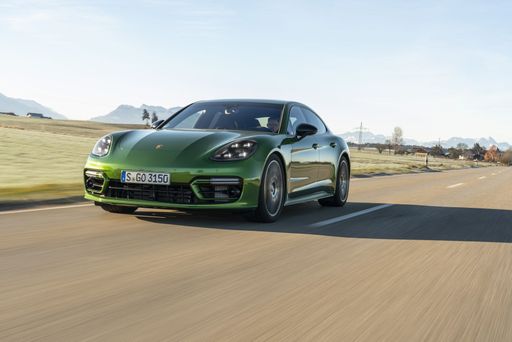
Porsche Panamera
Jaguar E-Pace
The Jaguar E-Pace is a compact SUV that combines the brand's signature luxury with a dynamic driving experience. Its sleek design features graceful lines and an assertive stance, making it a standout on any road. Inside, the E-Pace boasts a meticulously crafted interior with high-quality materials and advanced technology, providing both comfort and connectivity for drivers and passengers alike.
details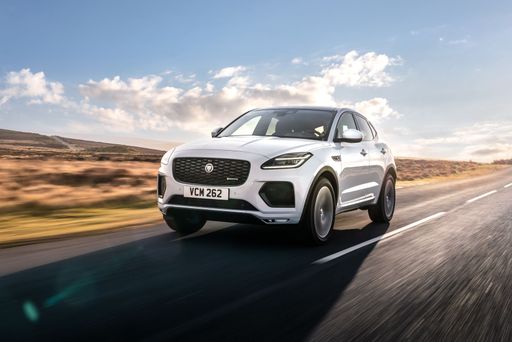 @ media.jaguar.com
@ media.jaguar.com
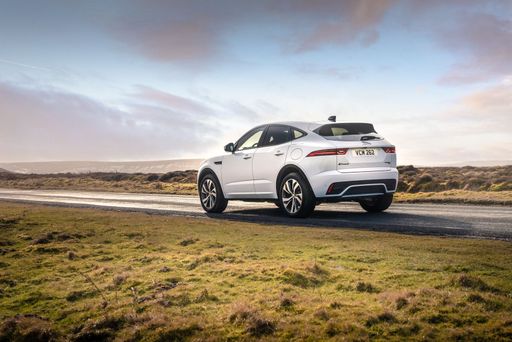 @ media.jaguar.com
@ media.jaguar.com
 @ media.jaguar.com
@ media.jaguar.com
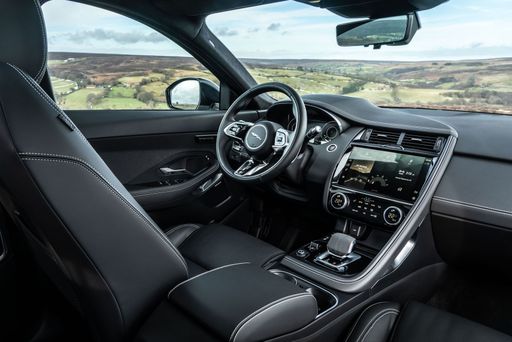 @ media.jaguar.com
@ media.jaguar.com
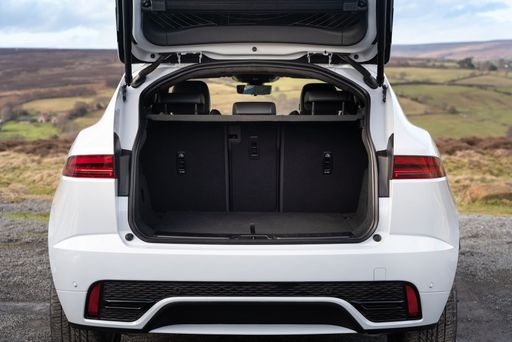 @ media.jaguar.com
@ media.jaguar.com
Porsche Panamera
The Porsche Panamera stands as a testament to the seamless fusion of luxury and performance in the automotive world. With its sleek design and powerful engine, it offers an exhilarating driving experience that is hard to rival. Inside, the Panamera boasts a meticulously crafted interior with top-of-the-line materials, ensuring comfort and sophistication on every journey.
details @ presse.porsche.de
@ presse.porsche.de
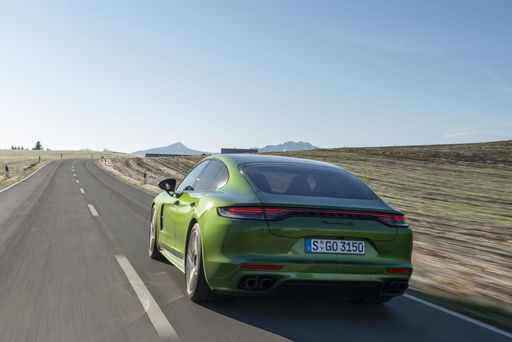 @ presse.porsche.de
@ presse.porsche.de
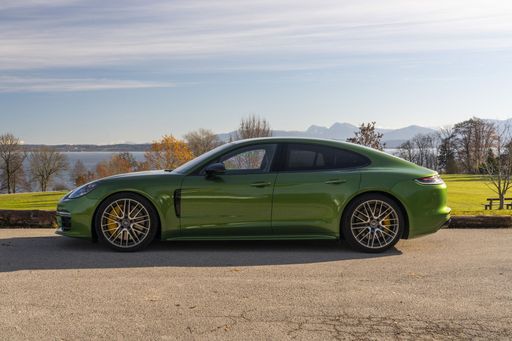 @ presse.porsche.de
@ presse.porsche.de
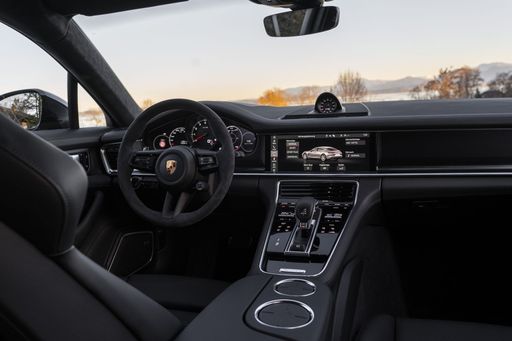 @ presse.porsche.de
@ presse.porsche.de

|

|
|
|
|
Costs and Consumption |
|
|---|---|
|
Price
32400 - 56100 £
|
Price
99800 - 212100 £
|
|
Consumption L/100km
1.4 - 8.2 L
|
Consumption L/100km
3 - 12 L
|
|
Consumption kWh/100km
-
|
Consumption kWh/100km
-
|
|
Electric Range
69 km
|
Electric Range
83 - 97 km
|
|
Battery Capacity
11.50 kWh
|
Battery Capacity
21.80 kWh
|
|
co2
33 - 185 g/km
|
co2
69 - 274 g/km
|
|
Fuel tank capacity
56 - 67 L
|
Fuel tank capacity
75 - 90 L
|
Dimensions and Body |
|
|---|---|
|
Body Type
SUV
|
Body Type
Hatchback
|
|
Seats
5
|
Seats
4
|
|
Doors
5
|
Doors
5
|
|
Curb weight
1783 - 2173 kg
|
Curb weight
1960 - 2535 kg
|
|
Trunk capacity
494 L
|
Trunk capacity
421 - 494 L
|
|
Length
4395 mm
|
Length
5052 - 5204 mm
|
|
Width
1984 mm
|
Width
1937 mm
|
|
Height
1648 mm
|
Height
1415 - 1428 mm
|
|
Max trunk capacity
1170 L
|
Max trunk capacity
1255 - 1385 L
|
|
Payload
497 - 554 kg
|
Payload
340 - 545 kg
|
Engine and Performance |
|
|---|---|
|
Engine Type
Plugin Hybrid, Diesel MHEV, Petrol MHEV
|
Engine Type
Petrol, Plugin Hybrid
|
|
Transmission
Automatic
|
Transmission
Automatic
|
|
Transmission Detail
Automatic Gearbox
|
Transmission Detail
Dual-Clutch Automatic
|
|
Drive Type
All-Wheel Drive, Front-Wheel Drive
|
Drive Type
Rear-Wheel Drive, All-Wheel Drive
|
|
Power HP
160 - 269 HP
|
Power HP
353 - 782 HP
|
|
Acceleration 0-100km/h
7.3 - 10.5 s
|
Acceleration 0-100km/h
2.9 - 5.3 s
|
|
Max Speed
190 - 211 km/h
|
Max Speed
270 - 325 km/h
|
|
Torque
260 - 540 Nm
|
Torque
500 - 1000 Nm
|
|
Number of Cylinders
3 - 4
|
Number of Cylinders
6 - 8
|
|
Power kW
118 - 198 kW
|
Power kW
260 - 575 kW
|
|
Engine capacity
1498 - 1998 cm3
|
Engine capacity
2894 - 3996 cm3
|
General |
|
|---|---|
|
Model Year
2024
|
Model Year
2025
|
|
CO2 Efficiency Class
B, G
|
CO2 Efficiency Class
G, B, C
|
|
Brand
Jaguar
|
Brand
Porsche
|
What drive types are available for the Jaguar E-Pace?
The Jaguar E-Pace is offered with All-Wheel Drive or Front-Wheel Drive.
The prices and data displayed are estimates based on German list prices and may vary by country. This information is not legally binding.
